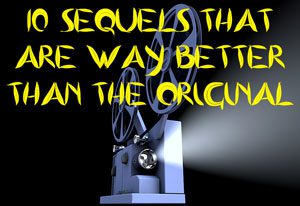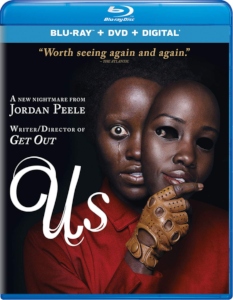Writer-director Jordan Peele’s latest horror offering, “Us” – which hits digital June 4 and disc June 18 — opens on a seemingly endless wall of caged rabbits, a promise of future symbolism. The slow and agonizing zooming out and the screeching music, driven by a chorus from hell, invokes an anxiety I haven’t felt in a long time. I felt this fear in snippets throughout the movie, although the pinnacle of the horror is the beginning. Despite this — and the surprising mixing of genre signals — I thoroughly enjoyed Peele’s followup to the 2017 classic “Get Out.”
After the claustrophobic rabbit scene, “Us” jumps to the narrative. A young Adelaide (Madison Curry) strolls along a Santa Cruz boardwalk with her parents, wandering off when her dad becomes engrossed by carnival games. She finds herself in an abandoned house of mirrors, and we know nothing good could possibly happen here. Adelaide, scared (as was I), races through the maze with a growing dread. Around the corner, she sees a girl: her height, her build, her hair, her shirt. But she faces away from Adelaide, not toward her as a reflection should.
After years of fighting the trauma of what she saw in the maze, an adult Adelaide (the amazing Lupita Nyong’o) seemingly has moved on with her life. She returns to Santa Cruz for the annual family vacation with husband Gabe Wilson (Winston Duke), daughter Zora (Shahadi Wright Joseph) and son Jason (Evan Alex). Gabe insists on a visit to the same boardwalk and beach with friends Kitty (Elisabeth Moss) and Josh (Tim Heidecker). Adelaide initially refuses, but I don’t know why she has never told Gabe about her fears and mental problems, even if by twisting the truth a bit.
Adelaide eventually relents, and of course the creepy moments start. Keep watch for “coincidences” in this film. They don’t serve much of a plot purpose, but they do smack of that symbolism. I’ll leave it to you to deduce what they mean. Foreshadowing is also rife throughout, though not always obvious when you first see it. “Us” leaves you thinking afterward, trying to see all the connections.
Perhaps one of the creepiest moments is Jason’s run-in with The Person near the mirror maze. We don’t see their face, only homeless-looking apparel and blood dripping from a hand. I would laugh at the T-pose, which reminds me of a certain video game glitch, if The Person’s aura wasn’t so repulsively threatening, making me uneasy.
Cue the four jumpsuited figures seen in the trailer, imposingly standing in the driveway. Are they demons? Flesh-and-blood? Mythical doppelgangers? A manifestation of each person’s dark side? Peele masterfully keeps us guessing until the final scenes.
Nyong’o is truly the shining star of “Us,” not as Adelaide but as the thoroughly menacing Red and in how she creates the interactions between the two. Red is intriguing, from her strange, tiptoeing dancer’s gait to her hoarse, pained voice. Something about her is oppressive, as if she physically radiates malice. At the same time, she is measured and chillingly tactical.

Joseph and Alex also put their all into their roles. You’d never know “Us” is the first feature film for both. Joseph plays Zora’s alternate with a convincing, sunken-eyed serial killer vibe, and Alex plays Jason’s alternate with wild savagery. The film focuses more on the other family members, but Duke plays well the role of caring father and comedic relief with genuinely humorous moments.
Once the alternates make their debut, the film becomes a wild ride. I was never sure what genre I was watching. At times it felt like a zombie apocalypse, at others a dystopian nightmare or an allegory of the American psyche. Peele pulls it off, for the most part. The ending left me with a furrowed brow, asking, “Why?” and “How?”
But perhaps the amalgamation of thematic indicators is what makes “Us” so intriguing, even if the catalyst for the conflict and events seems a bit simple and unfounded once explained. I’ll give that fault a pass, though, for the thrill of the film in its entirety, and the paradigm-wrecking plot twist. Thanks to Nyong’o and brilliant cinematography, the final scenes between Adelaide and Red are also visually and symbolically beautiful, an uncommon thing in horror films.
I hope Peele continues his rise as a creator in Hollywood; it’s well deserved after “Get Out” and “Us.” The themes in both and his approach to storytelling are fresh and exciting.

